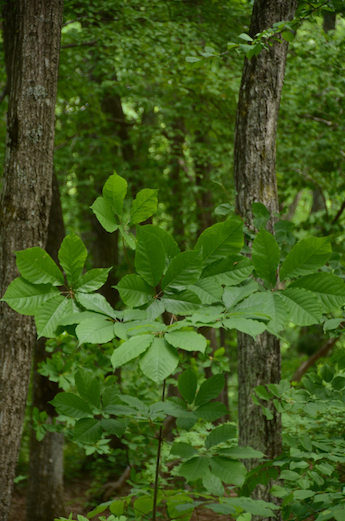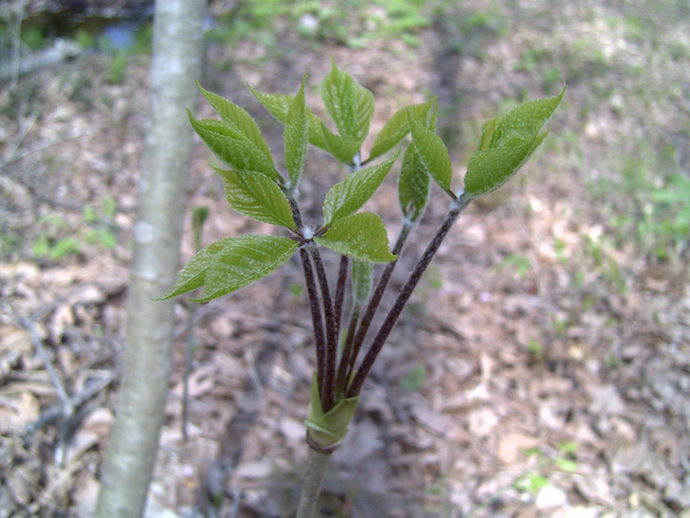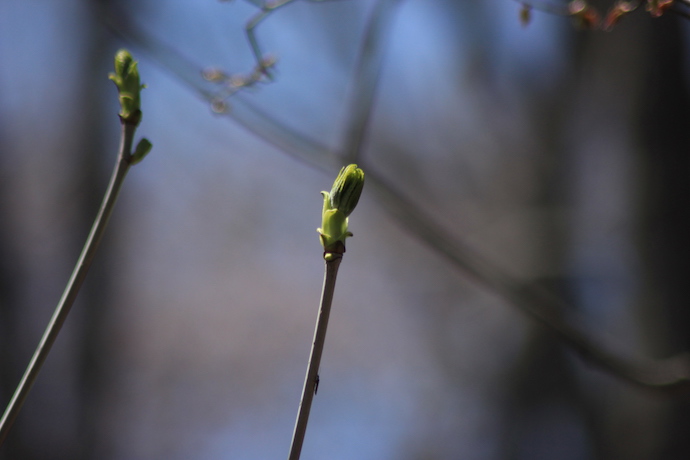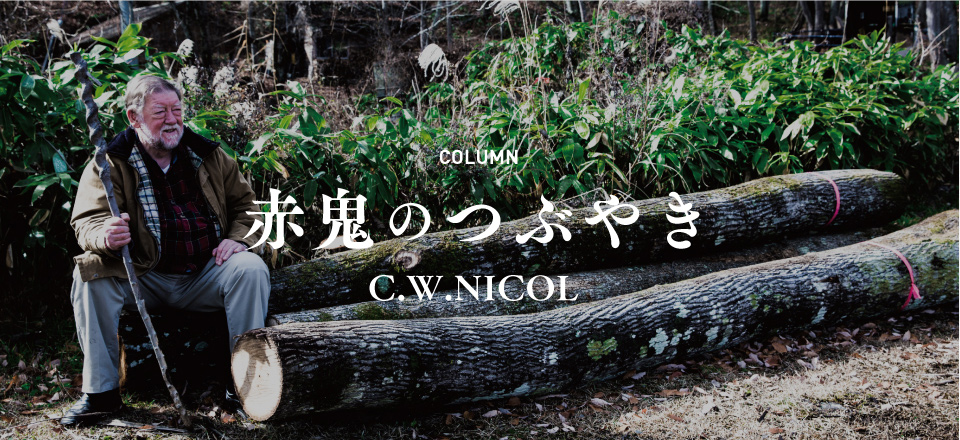Column
【赤鬼のつぶやき C.W.ニコル】コシアブラ(KOSHI ABURA)


アファンの森ではおなじみのコシアブラ。この木にも、英語の呼称がありません。ヨーロッパや北米に広がる広い英語圏ですら太刀打ちできないほどに、日本に固有の生物にはとてつもない多様性があるという証です。
今日は、コシアブラの学名を調べてきました。Eleutherrococcus scieadophyloidesだそうですが…これをそらで覚えるのはちょっと難しいかな。ギリシャ語では「自由な木の実」という意味があるそうです。そして英語だと灌木(かんぼく)と呼ばれるような植物の仲間だと思います。灌木は株立ち(一ヶ所から複数の幹が伸びている形で生えていること)する多年性の植物の総称で、木のように見えても背が低いものを指します。木は、通常一本の幹が地面から生えていること、そして灌木よりもずっと高く成長します。でも、コシアブラは7メートルから10メートルくらいまでは大きくなることがあるので、わたしは木と呼ぶことにしています。
沖縄を除く日本の山間地域では、コシアブラは山菜として食用になり、とても好まれています。春になると若いつぼみや、葉を摘んで天ぷらにするのは定番で、そのほかにもいろいろなレシピがあります。わたしはサラダにしたり、沸かしたお湯でさっと茹でて、日本の調味料で食べるのが大好きです。

コシアブラの葉は楕円形がくっついたような形をしていて、手の形にも見えます。そして小さな白い花を咲かせます。春の葉は鮮やかな若緑色で、香りに特徴があります。アファンの森のスタッフは、森に来てくださったお客さんによくコシアブラの葉を食べさせています。子どもたちも気に入って、喜んでかじっているようです。
コシアブラの枝は簡単に折れてしまうので、この木が日本で日常的に用いられてきたのはなぜなのかと不思議に思っていました。
ある時、コシアブラを使って作った木彫りの鳥の工芸品を米沢市で見かけました。木から削り出した尾の部分がくるりと巻いていて、海外のコレクターの間でもよく知られています。

森の短い早春には、芽をできるだけたくさん収穫して、誰もが喜ぶご馳走になります。そしてもう少しおかわりが欲しくなったら、すこしでも高いところへ山を登ってこの木を探します。山菜のコシアブラは、蕎麦が有名な隣町・戸隠で楽しめる名物メニューの一つです。
2017年6月
C.W. ニコル
写真提供:C.W.ニコル・アファンの森財団
KOSHI ABURA
Koshi abura, one of the more common species in our Afan woods, does not have an English name. This is because Japan has a far, far greater diversity in indigenous species than does Europe, indeed, even greater than Europe or North America. To prove that I did my homework, I found that the scientific name for koshi abura is Eleutherrococcus scieadophyloides, a name that I shall never remember, but comes from Greek meaning ‘free berries’. In English, koshi abura is would probably be described as a ‘shrub’. A shrub is a perennial woody plant smaller than a tree with several main branches growing from the ground. A tree is supposed to have a single stem, and grows taller than shrubs. However, koshi abura can grow to be 7-10 metres high, so I would personally call it a tree.
Anyway, here in Nagano and over most of mountainous Japan with the exception of Okinawa, we know koshi abura as one of our favorite ‘sansai’ foods. The buds and leaves are picked in the spring and most commonly served as tempura, although there are many different recipes, and I personally like koshi abura mixed in a salad or even blanched in boiling water, drained and squeezed and served with almost any kind of Japanese dressing.
Koshi abura has compound oval leaves, like five fingers, and tiny white flowers. It is slightly bitter, and in spring, freshly green and crunchy. Our forester Mr. Ishii regularly serves koshi abura to our guests and even children love it.
The branches of the larger koshi abura trees are easy to break and I wondered if the wood itself was used here in Japan. I discovered that in Yonezawa City, they have a folk craft where toy roosters with long curly tails are carved from this wood and are quite famous and popular with foreign folk art collectors.
For a short time in spring we can gather all the koshi abura sansai our guests or we need. Later on we can still gather koshi abura if we venture higher in the mountains. It is one of our neighboring Togakushi’s specialties in their famous buckwheat noodle shops.
C.W.Nicol
June 2nd. 2017
C.W.ニコル
作家・1940年イギリス南ウェールズ生まれ。1995年日本国籍取得。カナダ水産調査局北極生物研究所の技官・環境局の環境問題緊急対策官やエチオピアのシミエン山岳国立公園の公園長など世界各地で環境保護活動を行い、1980年から長野県在住。1984年から荒れ果てた里山を購入し「アファンの森」と名づけ、森の再生活動を始める。2005年、その活動が認められエリザベス女王から名誉大英勲章を賜る。2011年、2016年に天皇、皇后両陛下がアファンの森をご視察された。





